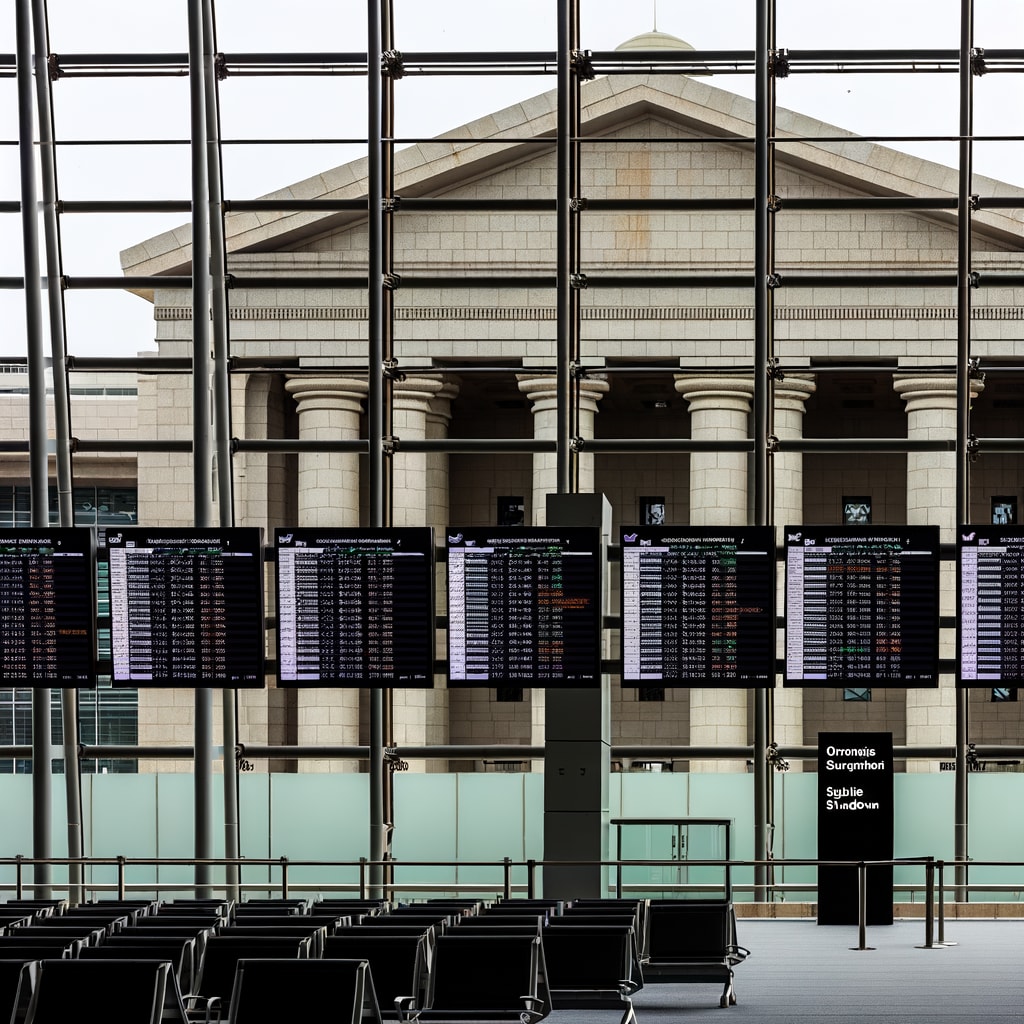U.S. Federal Government Shutdown Causes Unprecedented Disruption to Air Travel
The ongoing federal government shutdown in the United States has triggered a significant reduction in commercial air traffic, causing widespread disruption for travelers and airlines alike. The Federal Aviation Administration (FAA) has reportedly enforced a 10% cut in air traffic across 40 major airports in response to staffing shortages, leading to thousands of flight cancellations and delays. The shutdown, now the longest on record, shows no signs of a resolution, leaving the air travel industry in a state of uncertainty.
Background and Context
The government shutdown, now in its 40th day, has resulted in air traffic controllers and Transportation Security Administration officers working without pay, leading to an increase in absenteeism and a significant strain on the aviation sector. As a result, the FAA has been forced to implement a series of flight reductions in order to maintain air traffic control safety. These cuts began with a 4% reduction, but are set to increase to 10% by November 14th if the shutdown persists.
Key Developments
Over the past few days, over 2,000 flights have been cancelled daily, affecting all commercial airlines. More than 7,000 flights have experienced delays, and the number of cancellations and delays is expected to rise if the shutdown continues. The FAA has instructed airlines to prepare for a further reduction in flights, which could reach up to 20% if the situation does not improve.
In response to these developments, Transportation Secretary Sean Duffy warned that U.S. air travel could be reduced to a trickle
in the build-up to the Thanksgiving holiday, a traditionally busy period for air travel. He also raised concerns about the potential impact on the economy, echoing sentiments expressed by White House economic advisor Kevin Hassett, who warned of far worse
economic damage than initially estimated, with the potential to cut fourth quarter GDP growth in half.
Implications and Reactions
The impact of the shutdown on air travel has not only affected passengers, but has also disrupted cargo flights, raising concerns about potential shortages of food and medicine, particularly in communities that rely heavily on air travel for imported goods. Republican lawmaker Nicholas Begich expressed particular concern for Alaskan communities, many of which are not connected to any road system and rely on air travel for basic living essentials.
The situation has also sparked political tensions, with the White House blaming Democrats for the disruption, accusing them of flirting with disaster
. However, there is a glimmer of hope, as Senate Democrats have reportedly shown willingness to back a plan to reopen the government.
Current Status
As the shutdown continues, the future of U.S. air travel remains uncertain. Should the shutdown persist, further reductions in air traffic are likely, leading to increased cancellations and delays. The situation is closely being monitored by travelers and airlines alike, who are hoping for a swift resolution to the government shutdown.

